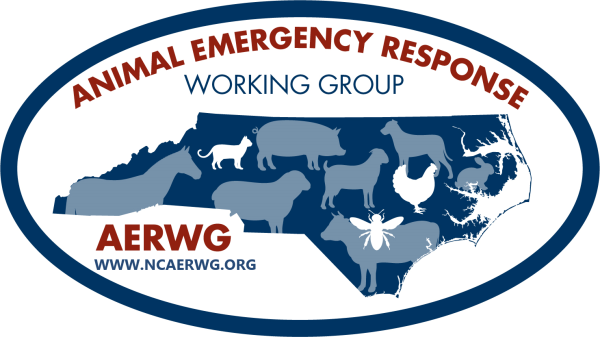
When Emergency Programs is not responding to a disaster, our team works with a variety of internal and external partners to prepare for all hazards response. Some of these activities include establishing plans and procedures, developing technological tools, maintaining equipment, participating in specialized training, conducting simulated drills and exercises, and evaluating the capability to respond effectively.
Resources
- USDA APHIS Animal Health Emergency Management
- Secure Food Supply Plans
- Zoo and Aquarium All Hazards Partnership
- Prepare Your Pets for Disasters
- American Veterinary Medical Association - Pets and Disasters
- ReadyNC - Prepare an emergency kit for your pets
- ASPCA - Disaster Planning for Cat Owners
- ASPCA - Disaster Planning for Dog Owners
- ASPCA - Disaster Planning for Horse Owners
- Large Animals and Livestock in Disasters
- Horse Owner Emergency and Disaster Preparedness (AAEP)
- Equine Disease Communication Center
General Preparedness Resources
- National Alliance of State Animal and Agricultural Emergency Programs (NASAAEP)
- NASAAEP Best Practices documents for various aspects of emergency response for animals
- NC State Agriculture Response Team
- Agriculture Emergency Response Team (AERT) Brochure
- American Veterinary Medical Association (AVMA) General Preparedness
- Centers for Disease Control and Prevention (CDC) Emergency Preparedness and Response Website
- The National Weather Service
- Disease Outbreak Map of Emerging Public Health Threats
- National Weather Service - National Hurricane Center
- USDA APHIS Disease & Pests
- USDA APHIS Animal Disease Information
- USDA Aphis Monitoring & Surveillance
North Carolina Animal Emergency Response Working Group

The North Carolina Animal Emergency Response Working Group is a collaborative effort of many state and local partners who are dedicated to enhancing the preparedness and response capabilities for any incident involving animals, including but not limited to livestock, throughout the state with coordination from many sectors.
North Carolina Agromedicine Institute
The NC Agromedicine Institute offers evidence-based agricultural safety and health programs, services, and resources to promote and protect the well-being of those who are involved in the NC agriculture sectors of farming, fishing, and forestry.
Biosecurity Your Way
Producers know biosecurity is critical to livestock and poultry management. However, the process of completing a biosecurity assessment and writing a biosecurity plan can be difficult and time-consuming.
Developed by veterinarians at Iowa State University, the new Biosecurity Your Way website helps producers simplify the assessment and planning process and implement

biosecurity that works for them. Producers can see how biosecurity benefits farms and interact with a virtual farm to learn about disease risks. Next, they can answer a few
questions about farm biosecurity to see what they do well and where they can improve. Then, producers can generate and download their customized biosecurity plan.
Available in English and Spanish, the “Biosecurity Your Way” website is free for producers. Website materials were developed with beginning farmers, non-traditional farmers, new farm employees, and youth in mind. However, the Biosecurity Your Way website can be used by anyone who wants to streamline the biosecurity assessment and planning process.
Carbon Task Force

The North Carolina Carbon Task Force is a collaborative effort of agencies dedicated to locating carbon materials for composting animal mortalities and coordinating training for Composting Subject Matter Experts (SMEs). These trained and credentialed SMEs plan and implement composting operations during disease and disaster events.
Fillable Carbon Source Vendor Survey
Carbon Source Site Locator (CSSL)

This GIS product assists incident management personnel coordinating composting efforts by locating suitable carbon sources close to impacted farms for a more efficient, cost-effective, and timely response.
Composting Subject Matter Expert Resources

- Mortality Composting Protocol for Avian Influenza Infected Flocks
- Job Aid: Overview of the Composting Process
- Job Aid: Pre-Compost Windrows for Avian Influenza Infected Flocks
- Job Aid: Carbon Sources for Windrow Construction
- Job Aid: Windrow Construction Protocol for Avian Influenza Infected Flocks
- Job Aid: Temperature Monitoring Protocol of Avian Influenza Infected Flocks
- Job Aid: Calibration of Analog Thermometers
